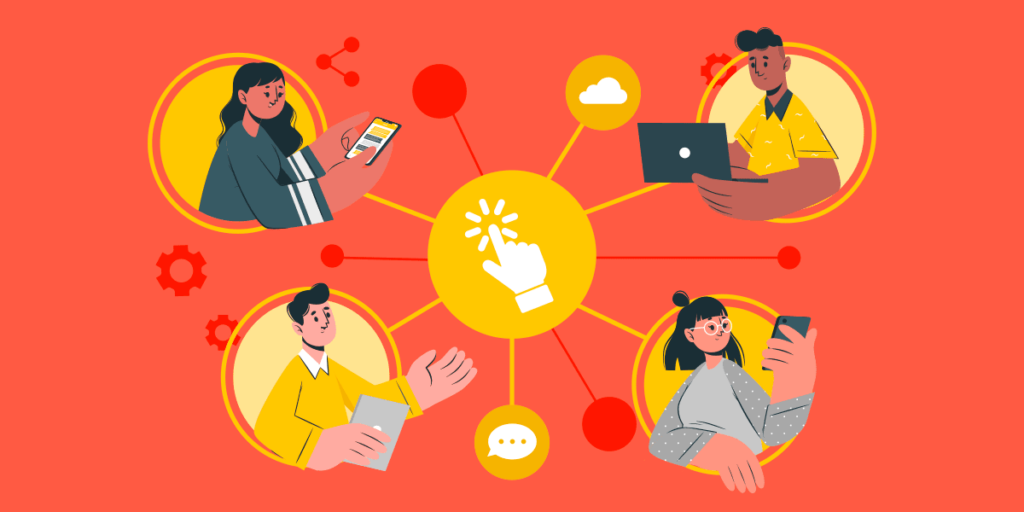Let’s talk about linking experience management with existing ITSM capabilities.
While experience first is a powerful goal, the business reliance on IT also means IT must take operations and IT service management (ITSM) very seriously. The good news is that the two are tightly aligned. The operational improvements required for high service availability so that the business can succeed also increase the employee experience through experience management.
The business reliance on IT means IT must take operations & #ITSM very seriously. This article by @msitsm shares several examples of how this connectivity works. Click To TweetThis article shares several examples of how this connectivity works, linking experience management with existing ITSM capabilities.
Incident management is a great example of linking experience management with existing ITSM capabilities
While incident prevention increases service availability, increased service availability increases the employee experience by removing interruptions that make it difficult for them to get their jobs done. Thus linking experience management with existing ITSM capabilities, where removing barriers and making it easier to be productive increases employee satisfaction.
Therefore, IT must remember that employees aren’t at work to engage IT in resolving incidents but rather to perform a vital role that technology supports. Thus, when an incident occurs, how it is handled also impacts the business’ competitive edge and the employee experience. Streamlined procedures that enable employees to see the status of a widespread interruption and log unreported incidents makes the business operational more quickly.
'IT must remember that employees aren’t at work to engage IT in resolving incidents but rather to perform a vital role that technology supports.' – @msitsm #ITSM #servicedesk #EX Click To TweetThe focus on experience also means that incident and problem management activities must extend beyond service availability and focus more on support for employee devices. Employees need the ability to access services from their devices, and any time away from that is lost productivity, which impacts their overall job satisfaction. A strong focus for IT in 2023 is looking at the procedures they need to manage device issues before they become outright failures and ensuring they have practices to provision and swap out equipment before or immediately on device failure. The prolonged downtime associated with contacting an IT service desk, troubleshooting an issue, and waiting while it’s repaired damages the customer experience.
To shift this, efforts to “humanize IT” focus on designing services, practices, and responses based on the employee’s rather than IT’s needs, linking experience management with existing ITSM capabilities.
IT self-service portals struggle too
Most IT service portal initiatives fail because they are designed to give the providers what they need. The result is a portal that is difficult to navigate, cumbersome, and a waste of time for the employee (and the IT organization has likely failed in linking experience management with existing ITSM capabilities). Instead of addressing the focus, IT simply forces people to use it. The better approach would be to find out why employees don’t use the portal, then apply a design-thinking approach to redesigning it. This approach should include creating journey maps of the most commonly used services in the portal and getting the employee perspective, then redesigning the portal based on what’s learned from the effort.
However, the shift in designing for the employee experience goes beyond the portal. It also means understanding how people use the technology and its impact when it fails or doesn’t provide the features the employee needs. This goes beyond meeting service levels to understanding employee needs and how they work and designing services and agreements that ensure these needs are being met. Returning to incident management, they don’t want issues handled in eight hours; they want fewer issues. Given this, the “watermelon effect” we talk about in ITSM demonstrates that we’re measuring the wrong thing because we have the wrong goals. It proves that we need to go back to the business to determine what IT’s goals should be. The metrics should measure that.
'The shift in designing for the employee experience goes beyond the #selfservice portal. It also means understanding how people use the technology & its impact when it fails' – @msitsm #ITSM #EX #servicedesk Click To TweetExperience management helps with this because it changes the focus from the technology to the business and its employees, but this isn’t new. What’s great about the emphasis on employee experience is that it returns the focus of ITSM initiatives to where they should have been all along: alignment with business initiatives and linking experience management with existing ITSM capabilities.
Once IT creates objectives aligned with the business’s strategic initiatives, they can work with key employees to see how their day-to-day work helps the business meet those goals, how they use technology to do so, and how IT sometimes gets in their way. Then it’s possible to go back and redesign the way IT supports employees. These can be formalized as experience level agreements (XLAs). However, remember that the agreement is not the intended outcome; instead, it’s a way to measure that the intended outcome of successful support for business strategies is met. If this is not front and center in IT’s approach, XLAs will become the new watermelon measure.
Service configuration management helps too, linking experience management with existing ITSM capabilities
Increased complexity and technical debt result from years of slapping together solutions in silos, then trying to “connect the dots” rather than creating a foundation for success that enables technical debt to be lowered while increasing the effectiveness of the operational environment. It’s also the result of not understanding the foundation and overarching architecture. The emergence of cloud perpetuates this, making it easier to get solutions for new services into operation more quickly. So what’s the answer?
IT must get serious about service configuration management to solve the complexity and technical debt problem, as well as linking experience management with existing ITSM capabilities. The approach IT has fallen into, where multiple silos are creating solutions for business needs without understanding what’s in place and then needing to cobble them together with integrations, increases technical debt.
A story about the railroads and the space shuttle is circulating on social media. It points out that the distance between the rails of train tracks comes back to the width of two horses in Roman times. Fast-forward to today, most railroad systems use the same gauge, ensuring trains can travel any tracks in their country or continent. Enter NASA. It needed to transport equipment via rail and had to narrow components of the space shuttle to ensure they’d fit through a railway tunnel to arrive at their destination.
What’s the message of this story? Service configuration management makes it possible to streamline operations. Imagine what would happen if every country or region had a different railway gauge. Travelers would need to disembark one set of engines and cars and embark onto another set each time they crossed regions. It’s the same with NASA. They wouldn’t have known the maximum size of the shuttle components until they hit the first tunnel.
Instead of knowing what they’ve got and working within a specific architectural standard to keep designs streamlined, IT operates as a free-for-all in many organizations as long as they can get the solution out quickly. Service configuration management is the start to driving down complexity and technical debt as it lets IT see what’s available in the environment and how services connect. Once this can be visualized, solution streamlining that improves employee experiences and lowers technical debt can begin. Again, linking experience management with existing ITSM capabilities.
This article by @msitsm demonstrates the connectivity between existing #ITSM practices & employee experience improvement. #EX #ServiceDesk Click To TweetUsing AI to improve further
Continuing from the previous service configuration management section, it’s possible to see how artificial intelligence (AI) can improve the user experience. For example, automating proactive support:
- Automating device management by uniting the configuration management database (CMDB) with policies and AI makes it possible to drive automated updates for devices that don’t meet expected standards.
- The ability to digest large quantities of data and recognize issues before they affect performance enables automated resolution or alerts to technicians.
- Knowing how components in a service should connect and perform enables AI to detect anomalies that could mean failure or cyber-attack, initiating automated responses while technicians are engaged with automated alerts.
Or transforming employee/end-user support:
- Using configuration management information, error logs, traces, and other information enable operational tools to assign a device “health score” and open alerts to ensure potential failures are addressed before they impact the end-user.
- Adding AI to omnichannel support can help achieve true self-service by looking at tickets related to a ticket being logged regardless of the support channel
- While entering an incident in the service portal or via chat, the end-user can be directed to repairs done for this issue (either automated repairs or knowledge articles)
- When the user engages an agent at a service desk, the agent can see other issues affecting the caller and a history of their issues with the device or application, speeding up resolution.
Or driving faster more responsive change:
- With a robust service configuration management practice and a history of the changes logged over time, systems can perform an automated risk management assessment for a proposed change that is more accurate than subjective risk assessments developed by the person submitting the change.
- Understanding the technical linkages and risks means mitigation is faster and more effective, enabling the change to be performed more quickly.
- Using AI to increase the effectiveness of the change process means more changes can be automatically approved for deployment when they meet a pre-determined risk threshold
These are all areas where AI has the potential to positively improve the end-user experience by enabling effective operations, increased responsiveness to business initiatives, and improved issue resolution when linking experience management with existing ITSM capabilities.
Hopefully, this article has demonstrated the connectivity between existing ITSM practices and employee experience improvement. If you would like to know more about linking experience management with existing ITSM capabilities, please get in touch with me via LinkedIn.
Further Reading
Phyllis Drucker
Phyllis is an innovative and focused professional with more than 20 years of experience in Business/IT Strategy, Enterprise service management, governance, customer service and support, ITSM tool implementation, HR automation and team building gained through her experience providing IT support for the largest car dealership in the US, as Operations Director of itSMF and through offering training and consulting services.
After more than 20 years in the support industry, she is taking her thought leadership out to the community by focusing on writing and speaking. In addition to her activities as a blogger, she’s a published author and her book “Service Management Online: Creating a Successful Service Request Catalog” is available through TSO. She’s also an experienced international speaker, having delivered keynotes and conference breakout sessions since her first speaking engagement in 1997. You can follow Phyllis on Facebook, Linked In and Twitter or visit her website www.ez2bgr8.com.

